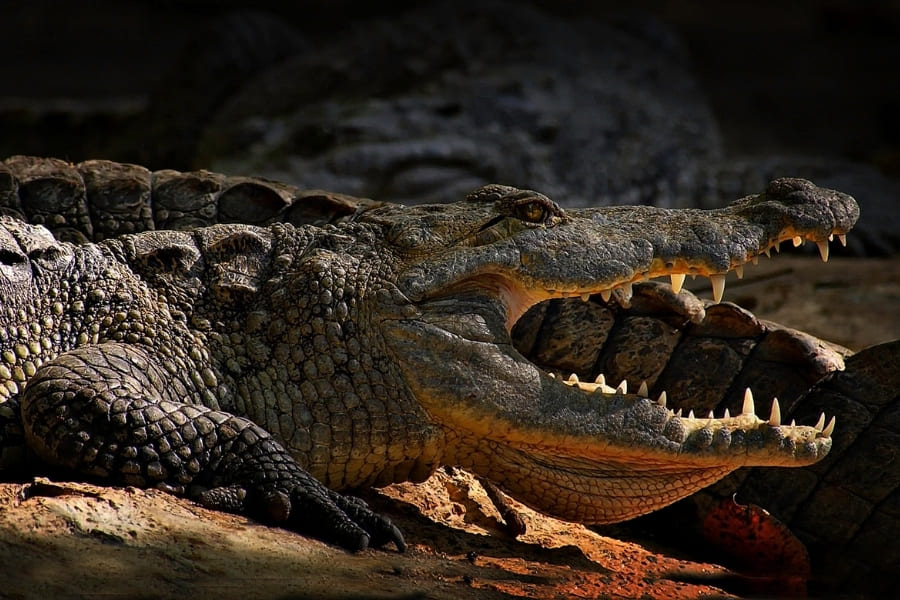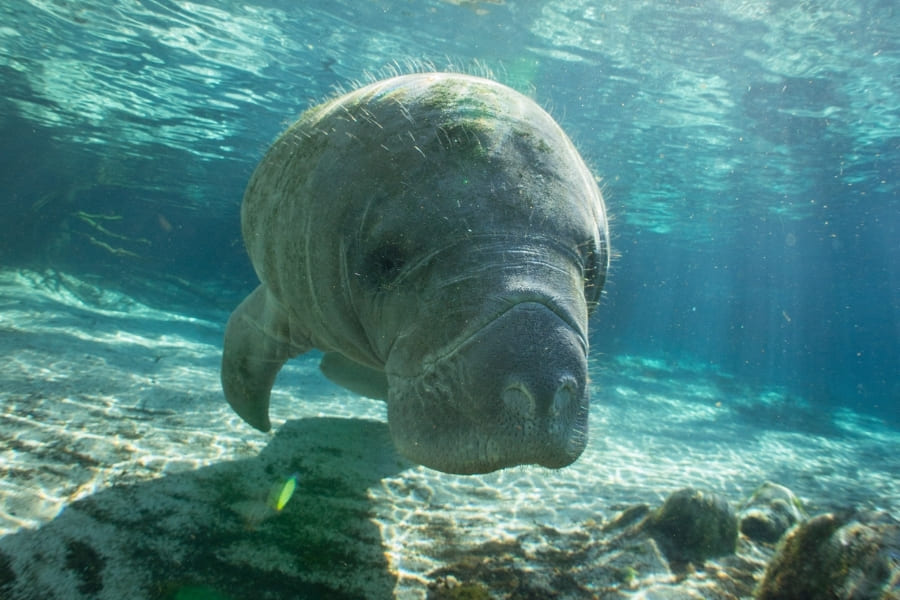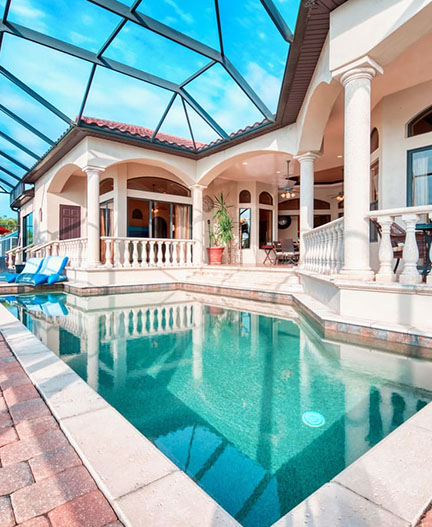Massive bodies, green scales and a mouth full of sharp teeth – Florida’s alligators and crocodiles are truly an impressive sight. Nowhere else in the USA can you observe these reptiles better than in Florida. We will give you all the important information about alligators and crocodiles, tell you where they live and which places are especially worthwhile for alligator and crocodile fans.
Alligators and Crocodiles – important Facts
Alligators and Crocodiles might look similar. At closer inspection, however, one can easily distinguish these species: Alligators, for example, have a thicker snout and darker skin than crocodiles. Due to their dominant upper jaws, you cannot see their lower teeth. What is more, they are mostly found in freshwater habitats: Unlike crocodiles, they do not possess salt- excreting glands.
Both members of the “Crocodylia” family are highly efficient hunters who have evolved in Millions of years. Fish, snakes, tortoises, birds and even mammals the size of cows make up the diet of alligators and crocodiles.
On average, the animals measure 10 feet in length and can weigh 500–1.000 lbs. Their size alone commands respect and careful handling. Neither alligators nor crocodiles hunt humans for food. However, accidents do occur when people walk too close to riverbanks, go swimming in restricted areas or provoke the reptiles on purpose. Florida’s crocodiles are slightly more aggressive. However, their number is so small that they hardly ever come in contact with humans.
Alligator and Crocodile Watching in Florida
It is almost impossible to go on vacation in Florida without stumbling over alligator attractions. However, the question remains: What are the best places to see the reptiles?
In Captivity
Anybody who has ever tasted the famous “Gator Bites” knows: Alligators are raised for their meat in Florida. The biggest alligator farm is located in Homestead and harbors a whopping 2.000 individuals. Here, you can watch the reptiles being fed and enjoy an “Alligator Wrestling” show – if you dare. The trainers perform dangerous stunts, and even touch the animals’ mouths – nothing for the faint of heart.
In Florida’s zoos and aquariums, alligators do not have to fear for their skin. Instead, they can lazily lie in the sun and enjoy a meaty treat every once in a while. In many places, visitors can feed them with bamboo poles – an exciting experience, especially for children. The reptiles are kept in 9 zoos of the state: among them ZooTampa at Lowry Park, Naples Zoo and ZooMiami.
Many zoos in Florida also offer fun, alligator-themed activities for the whole family: Do you want to pet a cute baby gator? Then, Orlando’s GatorWorld Parks is a worth a trip. Or how about a zip line ride over the crocodile enclosure? No problem at the St. Augustine Alligator Farm Zoological Park. There, you can also see the remains of Gomek – a record-breaking 16.4 feet saltwater crocodile. For a game of minigolf with views of a crocodile-filled lake, visit the attraction Smugglers Cove Adventure Golf in Fort Myers Beach.
In the Wild
Zoos and aquariums are perfect for learning more about the reptiles. However, if you want to study alligators and crocodiles in their natural habitat, you should take a trip into the wild. Animal fans all around the world know the Everglades National Park. A whopping 200.000 alligators live here, so sighting them is almost guaranteed. Airboat tours are very popular in the Everglades. On these trips, expert guides will take you to the best alligator spots. With a bit of luck, you might not only see alligators, but also the rare crocodiles. Both species share the same habitat in the Everglades.
You can also spot the reptiles on hiking paths like the Tamiami or Anhinga Trail. For some watery fun, explore the River of Grass on a boat ride. Many visitors launch their kayak on the Nine Mile Pond near Homestead to go looking for alligators and crocodiles – from a safe distance, of course.
There are more places in Florida that are perfect for alligator watching – among them:
- Oasis Visitor Center (Big Cypress Preserve)
- Myakka River State Park (Sarasota County)
- Wakulla Springs State Park (Tallahassee)
- Hillsborough River State Park (Tampa Bay)
- Corkscrew Swamp Sactuary (Naples)
- Ocala National Forest (Orlando).
By the way: Guests in Cape Coral should take a trip to the J. N. “Ding” Darling National Wildlife Refuge on Sanibel Island. The island’s mangrove forests are a refuge for alligators that hunt in the water or regulate their body temperatures on riverbanks. However, you should not wait much longer: Due to an increase in saltwater, the reptiles’ habitat on Sanibel Island is constantly dwindling.
Crocodile Watching in Florida
Do you want to see Florida’s crocodiles in the wild? Then, you will need patience and a lot of luck. It is estimated that only 2.000 crocodiles remain in the Sunshine State. They predominantly populate the warm south of Florida. In addition to the well-known Everglades National Park, the following spots are worth a try:
- Biscayne Bay and Florida Bay (south of Miami)
- Marina of Flamingo (southern Everglades)
- Cooling canals of the Turkey Point Power Plant (Miami Dade County)
- Sanibel Island (southwest of Cape Coral)
- Canals and beaches from Key Largo to Key West.
Despite their threatened status, the crocodile population in Florida has been growing in the last years. Thus, in the future, it is likely that we will see the reptiles more frequently in other parts of Florida.






